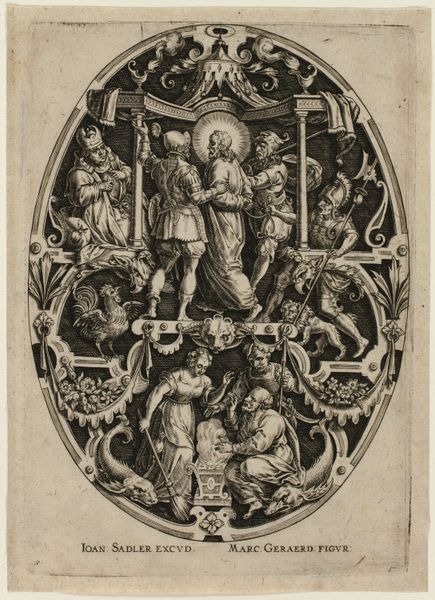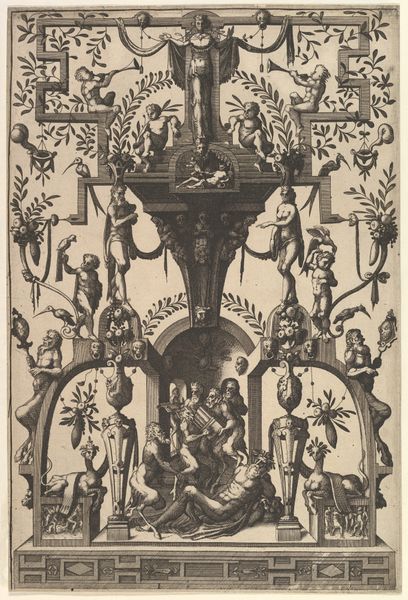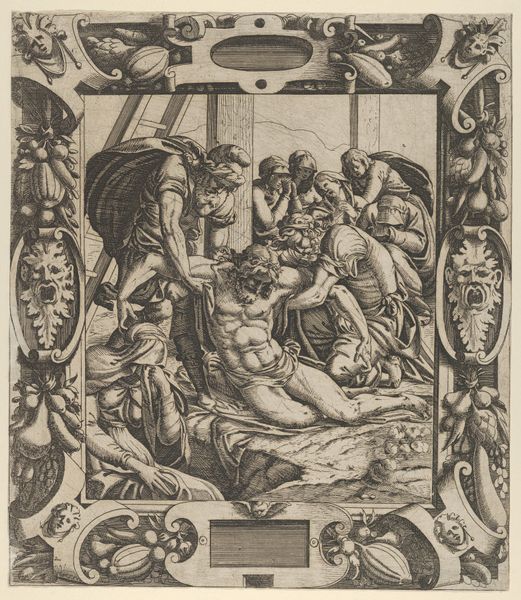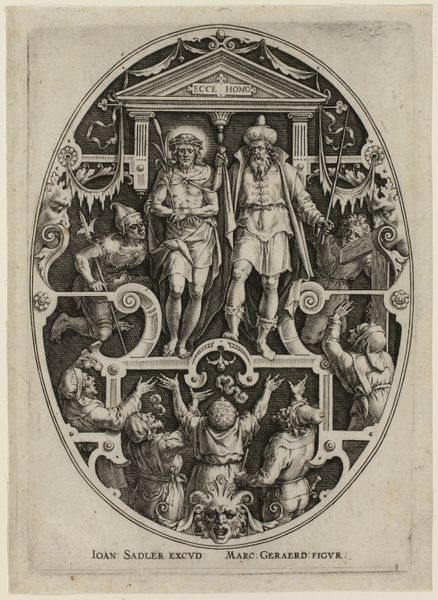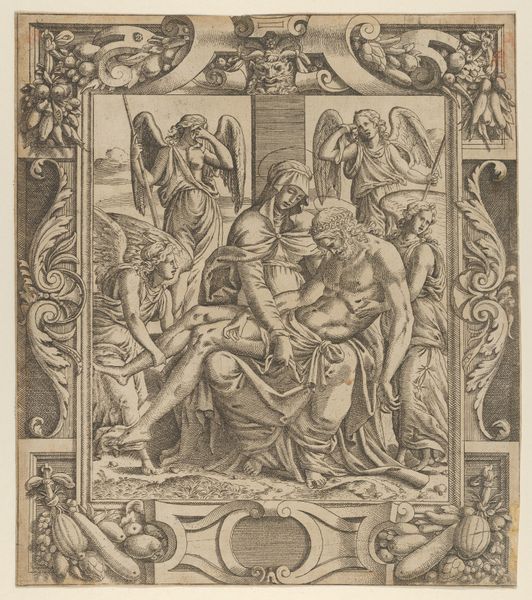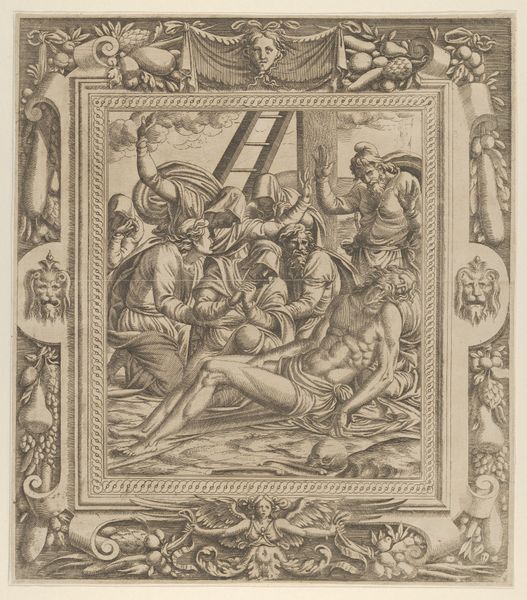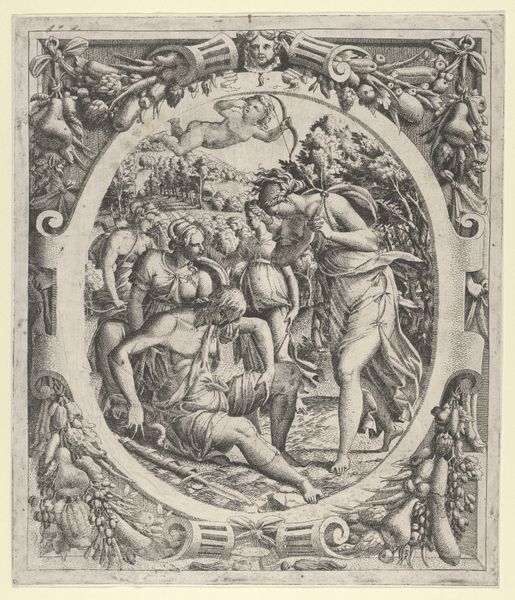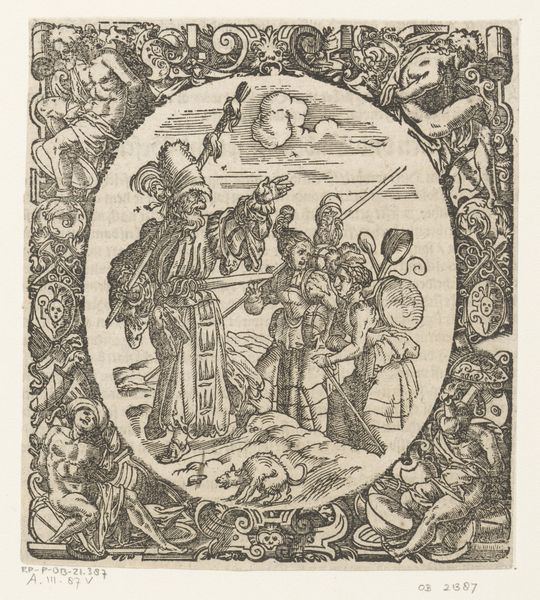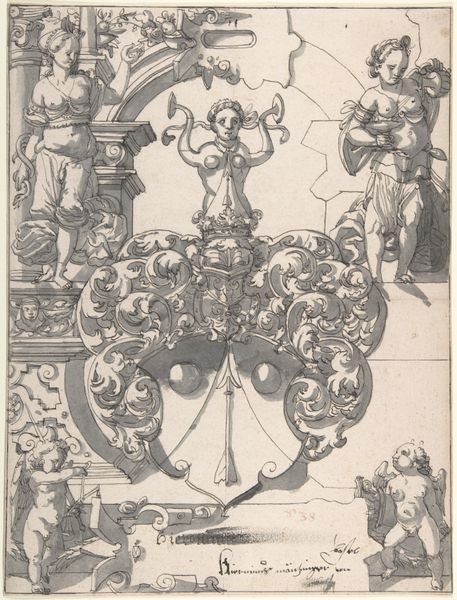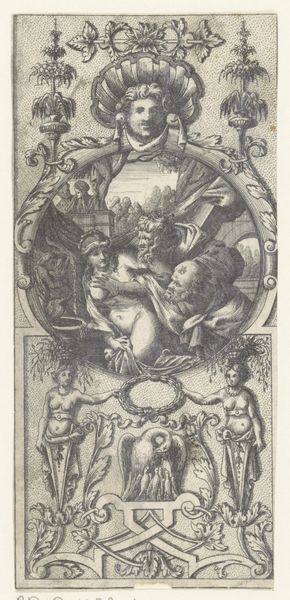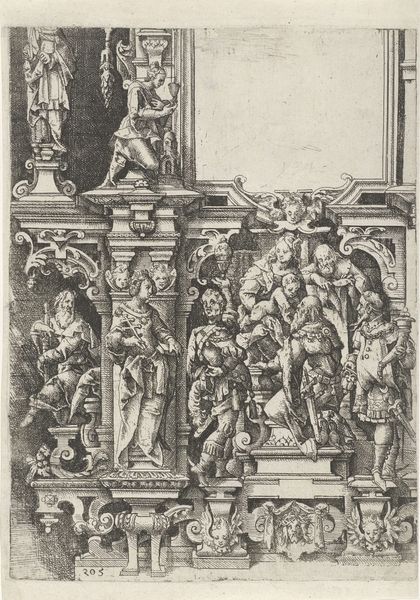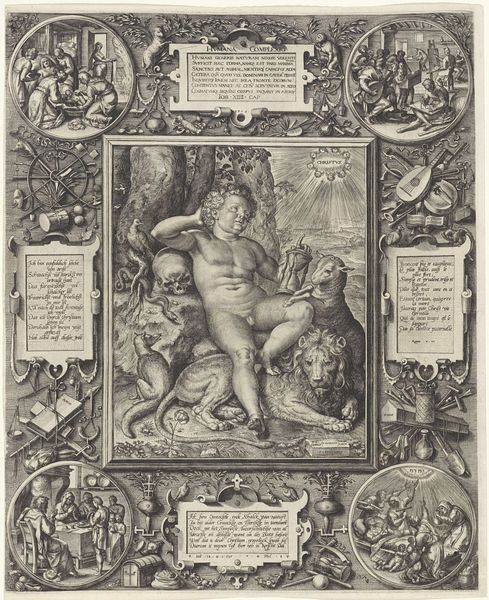
Christ Disrobed by the Soldiers, from Passion of Christ 1575 - 1600
0:00
0:00
drawing, print, paper, engraving
#
drawing
#
narrative-art
# print
#
figuration
#
paper
#
11_renaissance
#
history-painting
#
engraving
Dimensions: 162 × 113 mm (plate); 170 × 120 mm (sheet)
Copyright: Public Domain
Editor: Here we have Jan Sadeler the Elder’s "Christ Disrobed by the Soldiers," from the “Passion of Christ” series, made sometime between 1575 and 1600. It’s an engraving on paper. What strikes me is how enclosed and almost claustrophobic the composition feels, even though the subject is, ostensibly, about humiliation in a public space. How do you interpret this work? Curator: It’s compelling that you pick up on that sense of enclosure. Consider this engraving as a product of its time. The Renaissance was a period of intense religious and political upheaval. Images like this one weren't simply devotional; they served as potent visual arguments. This particular scene – Christ stripped – speaks to a profound loss of power, a forced vulnerability inflicted by state-sanctioned violence. Doesn’t the ornate border almost serve to *frame* this act, making it a spectacle? Editor: Yes, that makes sense. So, the composition itself is making a statement about power, who holds it and how they wield it. Is it commenting on other hierarchies as well? Curator: Absolutely. Consider the context of the Reformation. Who is stripping Christ here? It’s Roman soldiers. In a Protestant reading, this could be a commentary on the perceived abuses of power by the Catholic Church. Stripping Christ could symbolize the stripping away of true faith by corrupt institutions. Note the figures toiling at the bottom; what does their labor imply? Editor: Hmm, that the system that allows Christ to be humiliated is built on the backs of laborers… Wow. So, Sadeler isn't just depicting a biblical scene. He's using it to critique the socio-political structures of his time. Curator: Precisely. The power of art lies in its ability to both reflect and critique. How might you relate this image of stripped power with today’s discussions? Editor: It is powerful to recognize those reflections still visible across so many years, cultures and movements. Thanks! Curator: It has been an enjoyable opportunity to share insights.
Comments
No comments
Be the first to comment and join the conversation on the ultimate creative platform.
